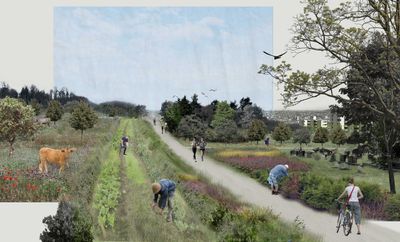Commonwoods: A Communally Managed Agroecological Zone at the Edge of UetlibergErze Dinarama and Manson Fung
The Uetliberg forest is a significant recreational oasis within the city of Zurich, serving as one of its primary public spaces. Maintained under strict protection measures, similar to other Swiss forests established by law in 1967, this area has remained largely unchanged despite Zurich’s urban expansion. Originally protected for timber industry control, it is now protected to fulfil ecological, social, and recreational functions as Zurich continues to grow exponentially.
While the city’s expansion hasn’t directly impacted the forest’s borders, it has affected the number of trees beyond the forest limits—the “unprotected” zone. Alongside the disappearance of orchards, the tree count in Zurich is declining at a rate of 4.6% per year. Additionally, other forest functions, such as the protection of water bodies and soil, have disappeared beyond the forest border—streams are placed underground, and soil becomes irrelevant. Despite being perceived as the strong ecological backbone of the city, the forest also faces vulnerability to climate change: its primary species—beech and spruce—are at risk of disappearing.
In response, we propose a new forest typology, an urban commonly managed forest, which we refer to as the “commonwoods”. This concept encompasses the existing forest and extends beyond the traditional managed forest and strict protection zones, and its role as a compensation area. It encompasses adjacent agricultural areas and the built-up area, where farmers and the local community become stewards of this new zone. By doing so, the forest’s ecology extends into the agricultural zone pushing into the city.
